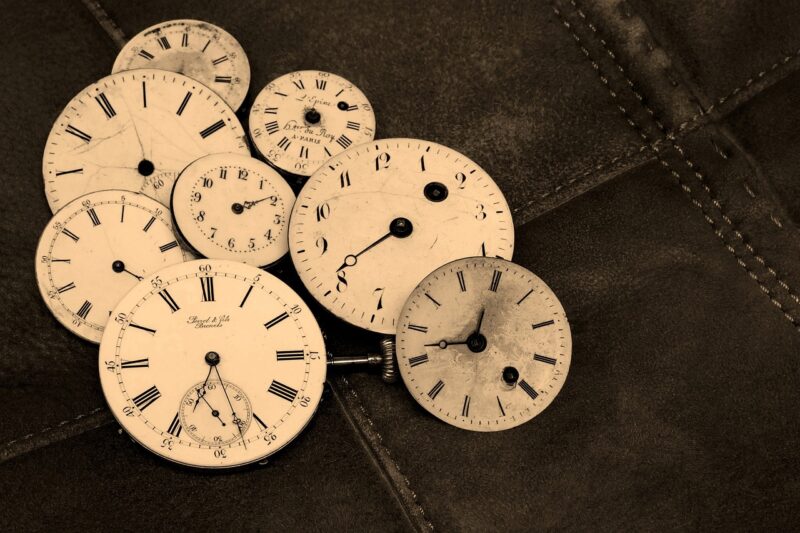When Time Travel Was ‘Invented’: The Strange Story of the Chronovisor
November 15, 2024

Time travel has long been a tantalizing concept that sparks imagination and curiosity. From H.G. Wells’ literary classic “The Time Machine” to the cinematic adventures of the “Back to the Future” franchise, the idea of journeying through time has captivated audiences for generations. But what if I told you that there was a device that purportedly allowed researchers to view events from the past? This brings us to the curious tale of the Chronovisor, an alleged time-travel machine that has intrigued historians and scientists alike.
1. What is the Chronovisor?
The Chronovisor is described as an advanced device supposedly developed by a team of scientists in the mid-20th century, led by the enigmatic Italian priest and scientist, Father Pellegrino Ernetti. According to its proponents, the Chronovisor can tune into frequencies that allow users to “view” any moment in time, akin to a television set that captures not just visual but auditory experiences of significant historical events.
Supporters of the device claim that it could replay scenes from history, allowing scientists, historians, and curious individuals to witness pivotal moments, from the building of the pyramids to the crucifixion of Jesus Christ. The Chronovisor’s alleged capabilities are both thrilling and profoundly unsettling, raising questions about privacy, the nature of time, and our understanding of history itself.
2. The Origins of the Chronovisor
The story of the Chronovisor begins in the 1950s when Father Ernetti, along with a team of scientists that included renowned physicists, purportedly began research into time travel and its implications. According to Ernetti, they succeeded in creating the Chronovisor in 1972, and its initial use was to capture audio and visual data from historical events.
The team reportedly used advanced technology, including a unique combination of electronics and principles of quantum physics, to construct the device. Ernetti alleged that the Chronovisor allowed them to watch events unfold as if they were happening live. One famous account describes how he supposedly viewed the Last Supper and the crucifixion through the device, giving him insights that he would later share with theologians and historians.
However, excitement quickly turned to skepticism, as the scientific community questioned both the validity of Ernetti’s claims and the underlying science. Critics labeled the Chronovisor as a piece of pseudoscience, leading many to dismiss it as nothing more than a fanciful tale.
3. The Science Behind Time Travel
While the Chronovisor’s existence remains cloaked in controversy, the science behind time travel has fascinated researchers for decades. According to Einstein’s theory of relativity, time is not a fixed entity but a variable that can be manipulated under certain conditions. Theoretical constructs such as wormholes and time dilation present intriguing avenues for thinking about time travel.
1. Wormholes: Hypothetical passages through space-time that could connect disparate points in time and space, akin to shortcuts in the universe. Some physicists theorize that if wormholes exist, they might allow for time travel, at least in theory.
2. Time Dilation: A phenomenon described in relativity where time moves slower as one approaches the speed of light. This concept suggests that time travel forward might be possible for those journeying at extraordinary speeds, although returning to the past remains problematic.
Although these concepts lend credibility to the broader discussion of time travel, they remain firmly rooted in theoretical physics and have yet to find practical applications or evidence supporting time travel’s feasibility.
4. The Allegations and Controversies
The Chronovisor saga is punctuated by debates over authenticity and the nature of scientific exploration. Following Ernetti’s initial claims, several skeptics emerged, pointing out inconsistencies and problems with the purported technology. The lack of tangible evidence only fueled skepticism further. Critics argue that Ernetti made these claims to legitimize mystical beliefs and fears surrounding science and technology.
Interestingly, Ernetti later recanted some of his statements, suggesting that he had maintained the lie about the Chronovisor to preserve the dignity of his church’s teachings. He expressed that his original intention was to emphasize the importance of faith and historical belief rather than to provide an empirical scientific breakthrough.
Nonetheless, the story of the Chronovisor continues to capture the public’s imagination, leading to various conspiracy theories and speculation within circles fascinated by fringe science. Some even posit that the existence of the Chronovisor is concealed by secretive organizations, adding a layer of intrigue to the narrative.
5. Cultural Impacts and Legacy
Regardless of its legitimacy, the narrative surrounding the Chronovisor has influenced popular culture significantly. Books, movies, and television programs often reference time-traveling devices mirroring the claims associated with the Chronovisor. The sensationalism around the device encourages deeper discussions about humanity’s relationship with time, knowledge, and ethics.
The Chronovisor raises philosophical questions that transcend physics: If we could revisit historical events, what responsibilities would come along with such a power? Would it lead to a deeper understanding of our past, or would it create distortions in our perception of reality?
This dialogue resonates with the challenges of the contemporary digital age, where access to information influences our understanding of history and culture. In many ways, the contemplation surrounding the Chronovisor serves as a metaphor for the delicate balance between knowledge, memory, and the future.
Conclusion
The story of the Chronovisor is as intriguing as it is perplexing. It embodies the human fascination with time and the quest for understanding both our past and future. While the scientific validity of the device remains hotly contested, the narrative serves as a compelling reminder of our desire to explore both the limits of technology and the essence of human experience.
As we delve into the realms of physics and philosophy, we can’t help but wonder: What if time travel were not only a figment of our imagination but a gate to untold possibilities? Until we unlock the mysteries of time and reality, the Chronovisor stands as an emblem of our eternal quest to explore the unknown.
Remember, while the pursuit of knowledge and understanding is crucial, it’s equally important to acknowledge the ethical implications that come with it. The Chronovisor may be an imaginary device, but the questions it raises are undeniably real and pertinent to our ongoing journey through time.








